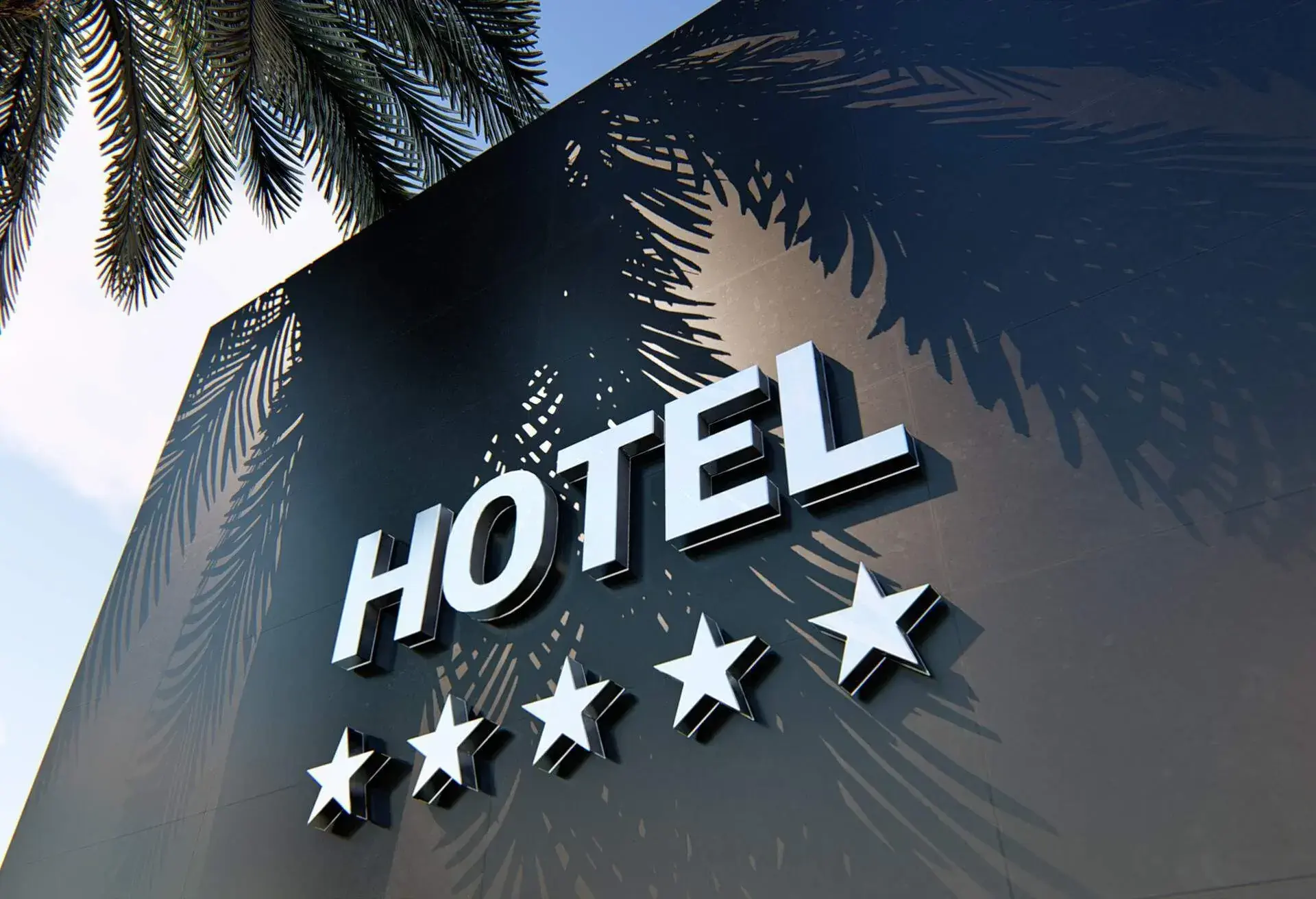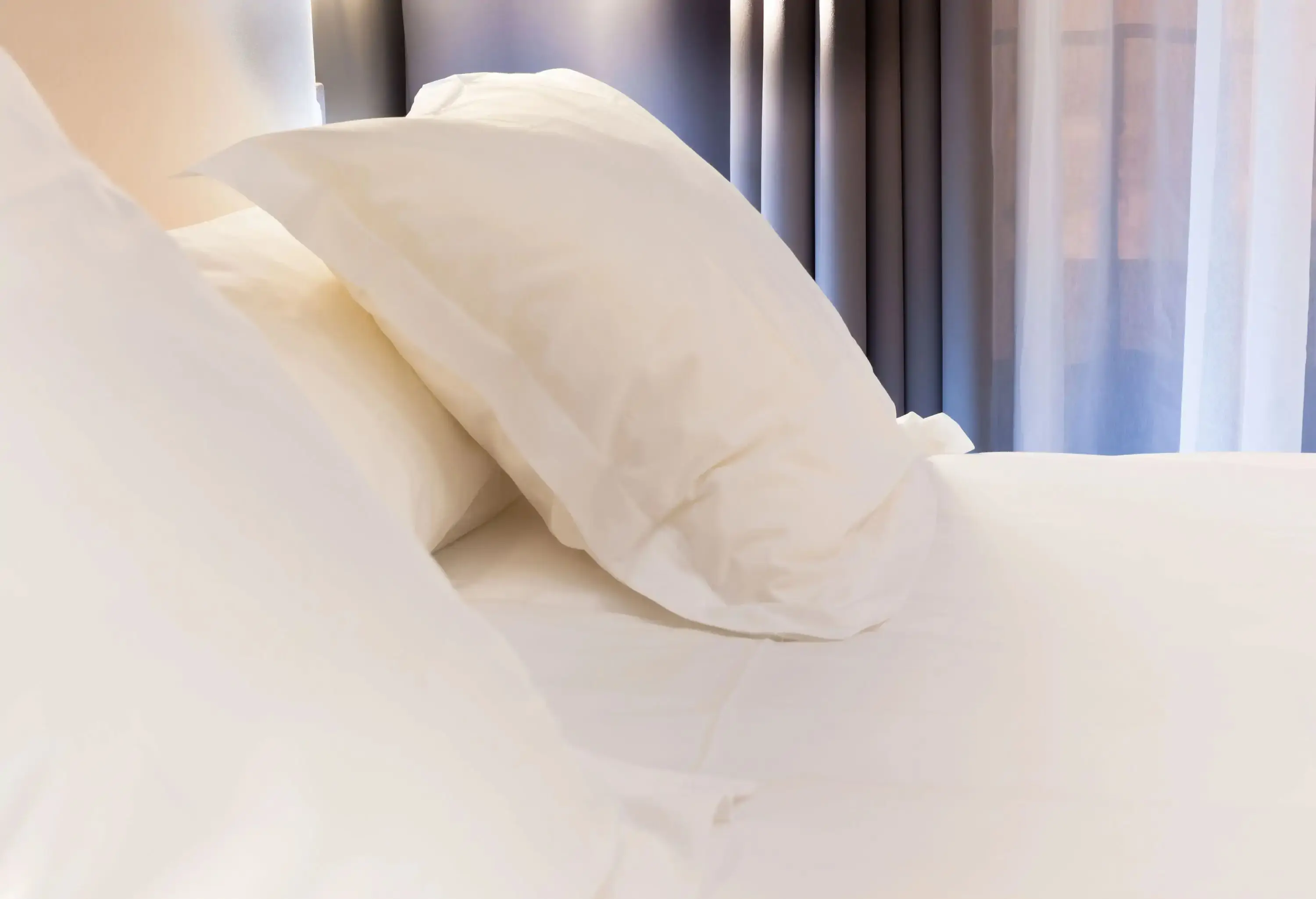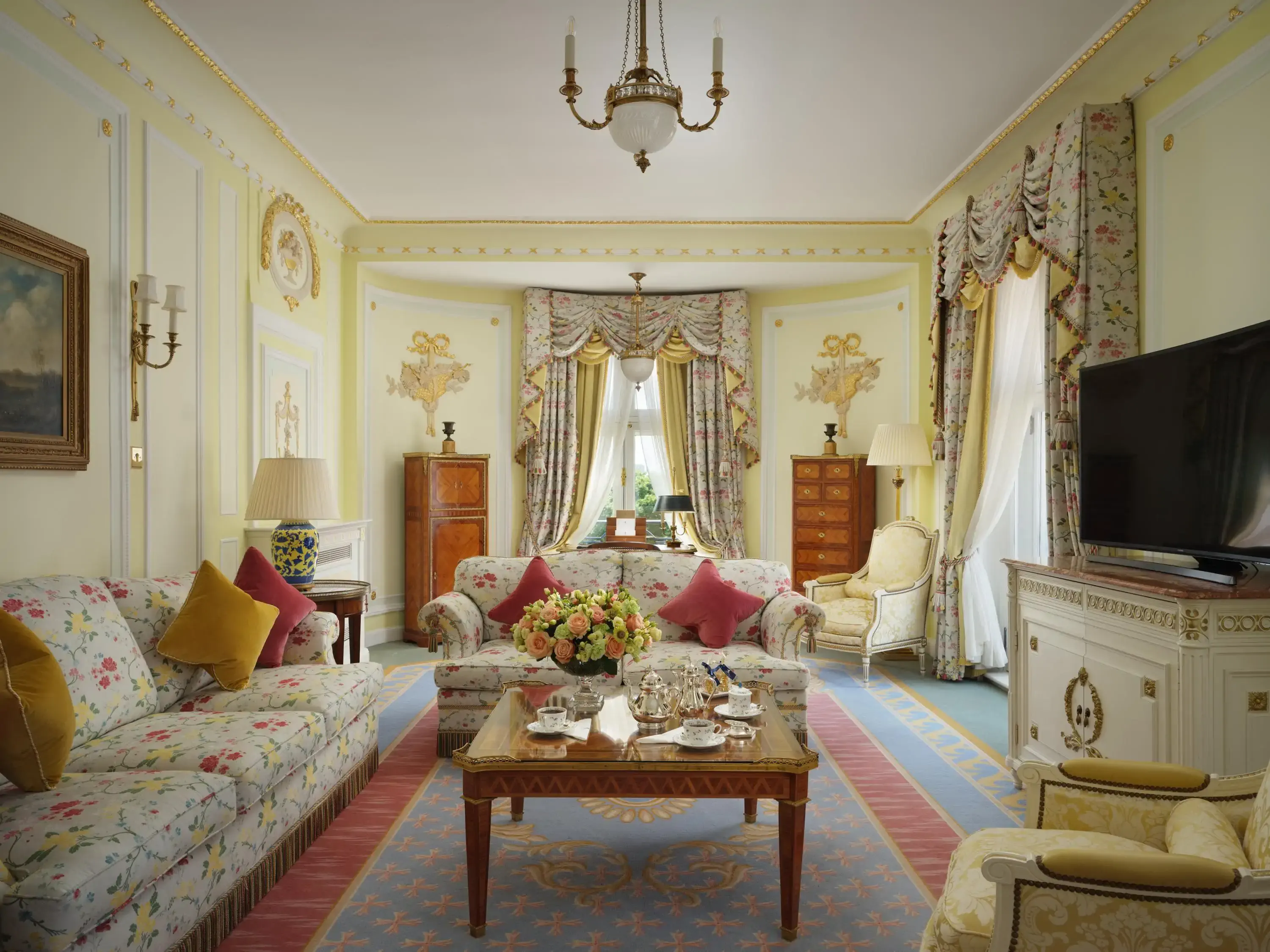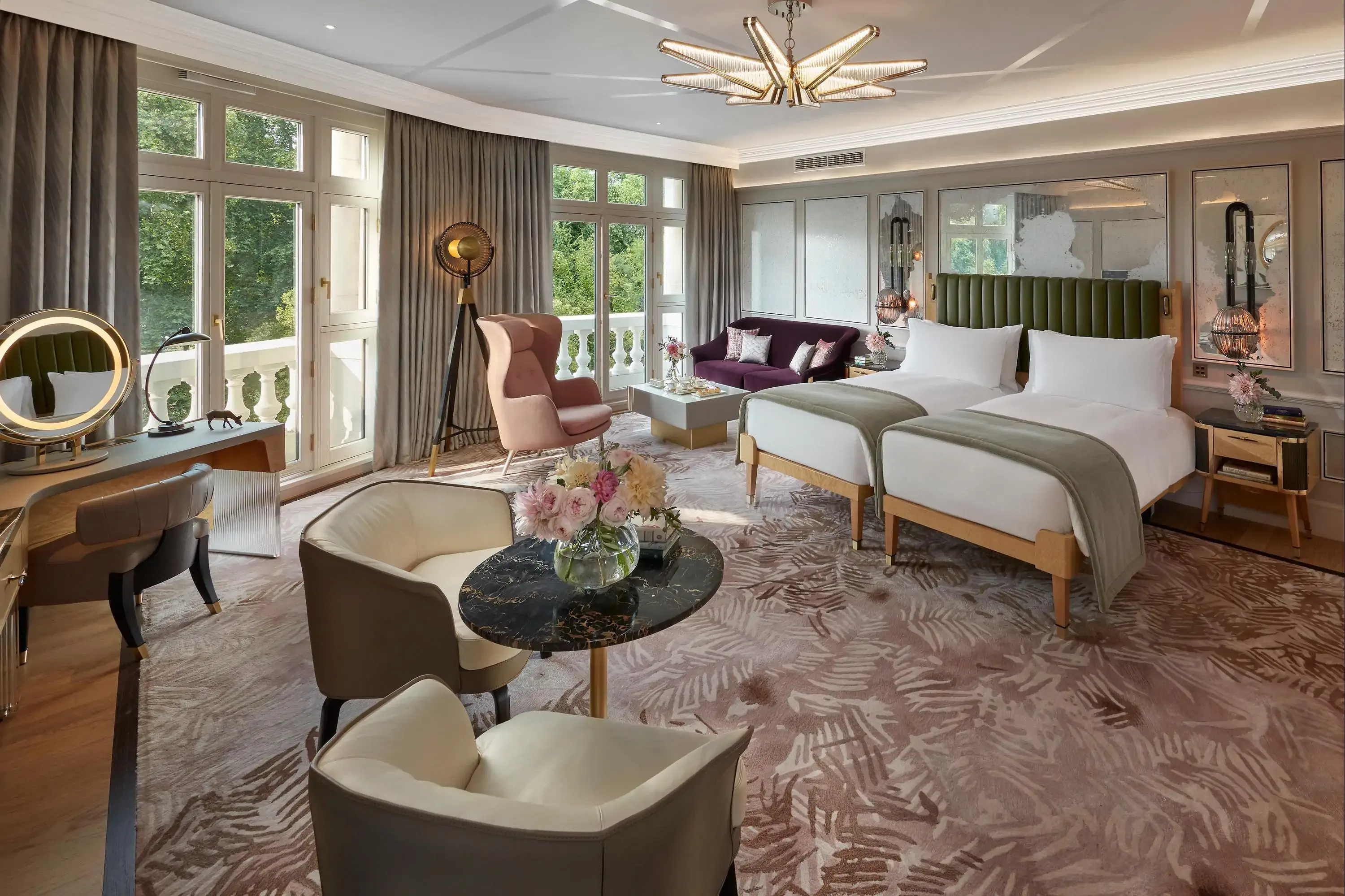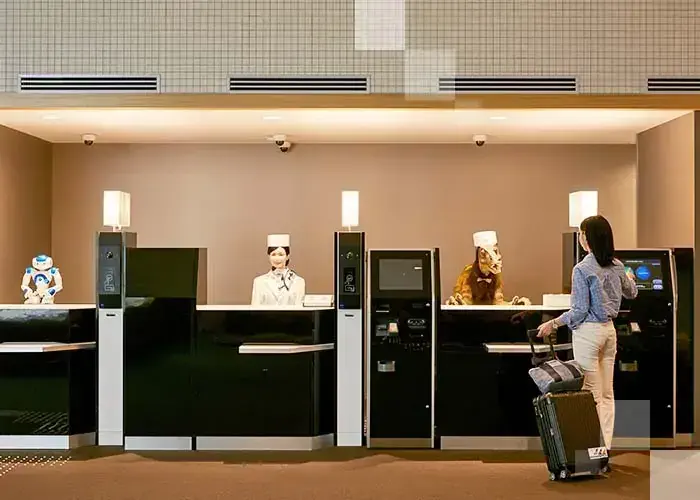When you’re looking for the perfect place to stay, using the hotel star rating system can be helpful. Hotel stars indicate a hotel’s cleanliness, quality, level of services, and amenities.
Whether you’re travelling for business or pleasure, it can be time-consuming to wade through all the options and find the best hotel for your needs, and that’s where stars come in. Here’s everything you need to know about the hotel star rating system.
What do hotel stars mean?
Hotel stars indicate a hotel’s quality. In general, hotels can receive a rating of one to five stars, with a 1-star rating being the lowest quality, or most basic, and a 5-star rating being the highest quality.
Star ratings can be helpful to set expectations and help people decide which hotel to book. If you want to determine what makes a great hotel (or a subpar one), using this rating system can be beneficial.
It’s important to note here, though, that there is no universal rating system — rather, there are various evaluating bodies in different countries. Hotel stars are awarded by independent organisations, travel sites, and tourism authorities.
Some of these evaluating bodies have their own star ratings (you may see that a certain travel site only awards hotels up to 3 stars, for example). For this reason, you could see the same hotel rated as a 3-, 4-, or 5-star hotel, depending on the site you’re using.

The most common hotel star rating systems
There are a few common hotel star rating systems in the UK and internationally. These include:
- AA Hotel and Hospitality Services – rates hotels from 1 – 5 Stars
- AAA Diamond Ratings – rates hotels from 1 – 5 Diamonds
- Forbes Travel Guide – rates hotels from 1 – 5 Stars
- MICHELIN Guides ‘MICHELIN Key‘ – rates hotels from 1 – 3 Keys
Some of the main criteria for awarding stars or ratings include the quality of the property’s facilities, meals, interior design, and level of service.
Hotel star rating overview: 1-star to 5-star
No star hotels
“No star” hotels are hotels that have not received an official star rating. These are sometimes low-quality hotels or boutique hotels that have opted out of the star rating system.
Expect the most basic accommodations at a 1-star hotel. That’s not to say that this type of hotel will be unclean or unsafe — it just indicates that a property has no frills in the form of extra amenities or services.
1-star hotels

1-star hotels generally have a bed and a bathroom, and that’s about it. Rooms may not have a TV or other amenities. These properties also don’t guarantee daily cleaning or 24-hour reception. Hostels and backpacker motel rooms fall into this category.
2-star hotels
2-star hotels are a step up from 1-star hotels in that they likely offer a few amenities, such as daily housekeeping, 24-hour reception, and a room with a phone or TV. Some 2-star hotels provide a continental breakfast.
Examples of common international 2-star hotels include Comfort Inn. Both 1- and 2-star hotels are the most cost-effective options.
3-star hotels
3-star hotels offer a blend of affordability and comfort. Guest rooms have quality bedding; rooms are spacious and equipped with a desk, closet, flat-screen TV, and coffeemaker. In terms of a 2-star vs 3-star hotel, the main difference is the amenities provided. Staff should also be friendly and helpful.
Whereas 2-star hotels don’t have much in the way of amenities, you can bet that a 3-star hotel will have a fitness centre, business-friendly amenities (such as conference rooms), and likely a pool and on-site dining options. A good example of a 3-star hotel is the Z Hotels in London and across the UK.
4-star hotels

A 4-star hotel is a more luxurious lodging. Guest rooms are noticeably more spacious, with top-quality linens, pillowtop mattresses, bathrobes, slippers, minibars and upscale toiletries, plus equipped kitchens.
More services are offered too: concierges, 24-hour room service, and car valet services are commonplace. In terms of on-property amenities, these likely include signature spas, indoor and outdoor pools, a fitness centre, and good dining options.
Because you’re meant to be able to get everything you need at a 4-star hotel (from food to activities), these types of hotels are usually located in major cities, near beaches or other tourist destinations. You’ll also likely notice that everything from the decor to the grounds is well maintained. Lobbies are larger, staff are helpful and will go the extra mile, and Wi-Fi is as speedy as it gets. A good example of a 4-star hotel is the Hoxton.
5-star hotels
5-star properties are the best you can get. At these hotels, attention to detail is unparalleled, and the customer service is very personalised. The amenities list is long. Guests can take advantage of a spa with personal trainers, gourmet restaurants, a dedicated concierge, saunas and steam rooms, live entertainment, and more.
5-star properties are also beautifully decorated and maintained, and often located in architecturally historic buildings. As you might expect, rooms come with designer linens and furnishings. The bedding is supremely comfortable, and in-room amenities will likely include spacious hot tubs, luxurious robes and slippers, an electric safe, and kitchenettes. The Ritz-Carlton and the Mandarin Oriental are two popular examples of 5-star hotels.
4- and 5-star hotels are the most expensive types of hotels.
Star rating limitations
While the star rating system provides a good window into the level of services, amenities, and quality you can expect from a given hotel, there are some limitations to this.
Because of the sheer number of companies and travel sites that award stars, it can occasionally be tough to find a universal (or near-universal) opinion on a hotel’s rating, especially when travelling abroad. Reviews can be handy to back up star ratings.
For instance, KAYAK’s hotel pages offer a ton of useful information for travellers looking for the best hotel for their needs. Simply navigate to the property you’re researching, and you’ll be able to read in-depth reviews, view the hotel’s location, and see a comprehensive list of amenities.
FAQ
Generally, hotels are rated up to 5-stars. A greater number corresponds to a greater level of luxury. That said, there are official and unofficial star ratings, and any hotel can say that it’s a 3-, 4-, or 5-star property. Officially, the ratings go up to 5-stars, but unofficially, some hotels call themselves “7-star ” properties to indicate a high level of luxury.
3-star hotels are more geared toward comfort, whereas 4-star hotels aim to provide a more luxurious experience. You won’t find a signature spa, customised fitness class, or multiple pools at 3-star hotels — but you will at a 4-star hotel.
The other difference is that staff generally provide more personalised service at 4-star properties. A couple of examples of these types of hotels include Westin by Marriott and Omni Hotels and Resorts.
The biggest difference between a 4-star and a 5-star hotel is that 5-star hotels are geared towards the highest standard and often the wealthiest clientele. You can expect everything to be top-class, from the on-property amenities to the lobby. Staff are trained to be at the beck and call of all guests, providing extra-personalised services.
“7-star” hotels aren’t officially a thing in terms of the star rating system, but you may hear this phrase used to describe certain over-the-top luxurious hotels. For example, the AYANA Villas Bali offers guests a three-course Floataway Champagne Brunch in the pool, and the Burj Al Arab Jumeirah has 17 types of pillows (yes, you read that right).

